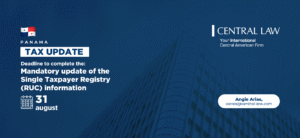Introduction
In the dynamic Panamanian labor landscape, where labor law is characterized by a strong protective focus towards employees, companies must not only comply with current regulations but also anticipate legal risks that may result in costly litigation or administrative sanctions. Labor conflicts often arise not so much from ignorance of the law, but from the lack of clear internal procedures, adequate documentation, or effective communication channels.
Below is a comprehensive guide based on practical experience, designed to help employers prevent conflicts and strengthen a legally sound workplace culture.
1. Proper Formalization of Labor Relationships
Every employment relationship must be formalized in writing, in accordance with Title II – Employment Contract of the Labor Code. The contract must reflect the agreed conditions and be tailored to the type of relationship (fixed-term, indefinite, project-based, task-based, etc.). It is crucial to avoid generic templates and to customize each contract according to the role, level of responsibility, and industry. Additionally, clauses on confidentiality, intellectual property, and alternative dispute resolution mechanisms must be included.
2. Validated Internal Regulations
The Internal Work Regulations, required for companies with more than 10 employees, allow for the establishment of clear rules regarding discipline, schedules, vacation, leave, sanctions, and mutual obligations. Once approved by MITRADEL, they must be distributed and signed by all employees. Any amendments must also be validated by the authority. It is also advisable to develop complementary protocols (telework, workplace harassment, social media use, etc.).
3. Timely and Full Payment of Benefits
Beyond salary, the employer must strictly comply with the payment of the thirteenth month, vacations, overtime, premiums, leaves, and contributions to the CSS and the Education Insurance. Maintaining signed and digital records of payroll, payment receipts, and transfers is essential. Even a minor omission can trigger legal claims for salary differences, indemnities, and sanctions before the General Labor Inspection Directorate.
4. Ongoing Training in Labor Law and Risk Prevention
Training must not be limited to operational staff but also include middle management and executives. Everyone should understand legal obligations, proper disciplinary practices, and the risks of non-compliance. Annual training programs should include topics such as gender equality, workplace harassment, handling disabilities, union relations, and occupational risk prevention.
5. Comprehensive Documentation and Traceability
In labor matters, what is not documented is lost. Signed records must be kept for warnings, leave and permits, overtime and premiums, performance evaluations, disciplinary communications, and contract modifications. It is essential to use validated digital tools and request electronic signatures where applicable, as well as establish an internal filing policy with both physical and electronic backups.
6. Proper Management of the Probationary Period
This period, up to three months, should be used to formally evaluate the employee. If the decision is to terminate the relationship, documentary evidence is required. A written evaluation should be conducted at the end of the second month, and any deficiencies must be documented. If not continuing, a detailed termination letter should be issued, and a settlement signed.
7. Transparent and Proportional Disciplinary Regime
Disciplinary sanctions must adhere to the principles of legality, graduality, and proportionality. Incorrect or inconsistent application of disciplinary measures can lead to nullity and legal claims for unjustified dismissal. Offering a documented opportunity for defense and not imposing sanctions without first hearing the employee is essential. Every disciplinary action must be based on objective evidence and signed by witnesses.
8. Labor Audits and Preventive Compliance
Labor audits are not only for large companies. Periodically reviewing compliance with contractual obligations, social security, and internal regulations can prevent fines and lawsuits. Scheduling a semiannual internal or external audit to review contracts, payroll, work hours, disability management, disciplinary system, leave policies, and occupational health regulations is key.
9. Legally Supported Termination of the Employment Relationship
Whether by mutual agreement, dismissal with cause, or without cause, all terminations must be clearly and transparently documented. Mistakes at this stage are the most costly for companies. Use settlement agreements validated by MITRADEL or a notary, properly justify cause with prior evidence in case of dismissal, and ensure full payment of all entitlements and benefits up to the termination date.
10. Preventive Labor Culture and Effective Communication
Litigation often does not stem from legal breaches but from a tense work environment, lack of engagement, or internal discrimination. An employee who feels ignored is more likely to go to court. Implementing confidential internal reporting channels, employee wellness programs, and workplace climate surveys, as well as fostering empathetic leadership trained in conflict resolution, is essential.
Conclusion
Avoiding labor litigation in Panama is not achieved solely through formal legal compliance but through a preventive, strategic, and human-centered approach. Companies that invest in good labor practices not only reduce legal risks but also strengthen their reputation, improve talent retention, and build sustainable organizations.
Need to Strengthen Your Labor Policies?
At Central Law Panama, we have a team specialized in Labor Law that supports you throughout the compliance cycle: from hiring to termination, including disciplinary management, regulatory design, and preventive auditing.
For more information, contact us: info@central-law.com
Aldemara Jaén Arias
Senior Associate
Panama




